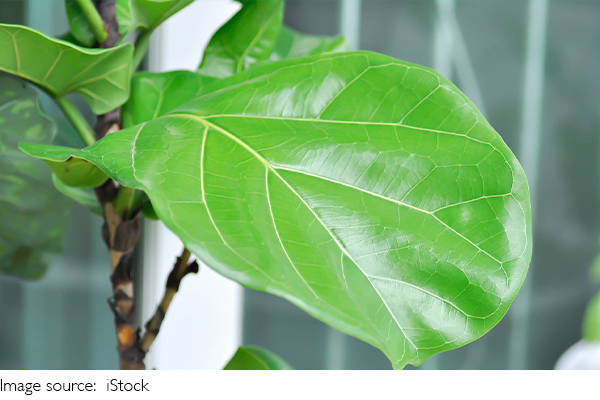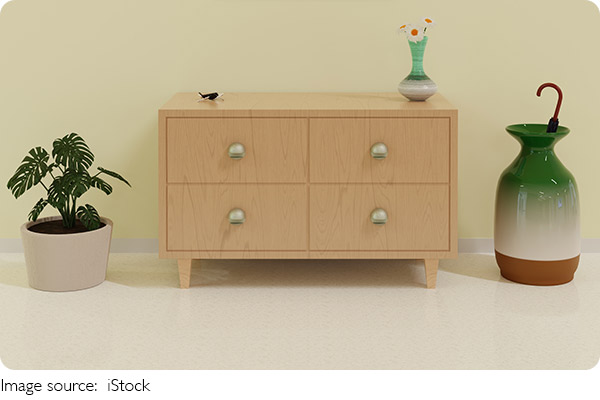Air-Purifying Plants

We all love having plants in our homes—they bring beauty, serenity, and a refreshing touch of nature. But did you know that certain plants can also help purify the air and enhance indoor air quality?
That's right! Indoor air can be filled with pollutants such as dust, and chemicals from cleaning products and furniture.
In this article, we'll explore the benefits of air-purifying plants like spider plants and peace lilies, and how they can improve the quality of the air we breathe every day.
Why Is Indoor Air Quality Important?
The air inside our homes can be up to five times more polluted than outdoor air. This is especially concerning because we spend about 90% of our time indoors. Poor indoor air quality can contribute to respiratory problems, allergies, and fatigue. Some common indoor air pollutants include volatile organic compounds (VOCs), formaldehyde, benzene, and ammonia. Fortunately, nature has a solution—air-purifying plants!
Air-purifying plants not only add a touch of greenery but also naturally filter these harmful pollutants. They absorb carbon dioxide and release oxygen while simultaneously removing toxins from the air. By introducing a few of these plants into our home, we can create a cleaner, fresher, and healthier indoor environment.
The Benefits of Spider Plants
One of the best-known air-purifying plants is the spider plant (Chlorophytum comosum). Spider plants are not only easy to care for, but they are also incredibly effective at filtering out toxins. These plants are particularly great at removing formaldehyde and xylene, which are common chemicals found in household products, furniture, and paints.
Spider plants thrive in a variety of indoor conditions, making them perfect for almost any room. They do well in indirect light, and they only need watering once the soil has dried out. Their long, arching leaves add an aesthetic appeal, making them a great addition to any space.
According to NASA's Clean Air Study, spider plants are among the most effective plants at improving air quality, and they are incredibly low-maintenance. They're perfect for those who want to improve air quality but don't have a green thumb.
Peace Lilies: Beautiful and Effective
Another fantastic air-purifying plant is the peace lily (Spathiphyllum). Peace lilies are known for their striking white flowers and glossy green leaves. Not only are they beautiful, but they're also powerful in removing indoor air pollutants. Peace lilies are especially effective at removing VOCs like benzene, formaldehyde, and trichloroethylene, which are often found in paints, cleaning products, and solvents.
Peace lilies are relatively easy to care for as well. They thrive in low to medium light conditions and prefer to be kept in moist soil. In fact, they even tell you when they need water—when the leaves begin to droop, it's time to give them a drink! In addition to purifying the air, peace lilies can also help regulate humidity levels in the room, making them an excellent choice for bedrooms and living areas.
Aloe Vera: A Plant with Multiple Benefits
Aloe vera is another incredible plant that not only purifies the air but also offers numerous health benefits. This succulent is particularly great for filtering out formaldehyde and benzene, both of which are common in household cleaners, paints, and varnishes. Aloe vera is a natural air purifier that also has the added bonus of being able to soothe burns and skin irritations.
Aloe vera is super low-maintenance, requiring only occasional watering. It thrives in bright, indirect light and can be kept in small pots or larger containers depending on the available space in your home. Its ability to purify the air and its medicinal properties make it a great choice for any home.
Areca Palm: A Tropical Cleanser
If you're looking for a larger plant that can make a statement while purifying the air, the areca palm (Dypsis lutescens) is a great option. This plant is known for its beautiful, feathery fronds and tropical appeal. Not only is the areca palm a stunning decorative piece, but it also works to filter out toxins such as formaldehyde and xylene.
The areca palm is also known for its ability to release moisture into the air, helping to improve indoor humidity levels. This makes it an excellent choice for dry climates or areas that need a bit of extra moisture. The areca palm thrives in bright, indirect light and needs to be watered once the soil dries out. It's an ideal choice for living rooms, offices, or even bathrooms.
Benefits Beyond Clean Air
While purifying the air is one of the most obvious benefits of air-purifying plants, there are other reasons why incorporating these plants into our homes can be beneficial. Studies have shown that indoor plants can help reduce stress, improve concentration, and boost overall well-being.
Being surrounded by plants can help us feel more relaxed, focused, and connected to nature. They can also add color and texture to our spaces, making them more visually appealing. And let's not forget that taking care of plants can be a rewarding hobby that promotes mindfulness and a sense of accomplishment.
How to Care for Air-Purifying Plants
Caring for air-purifying plants is generally straightforward, but there are a few things to keep in mind. Most air-purifying plants prefer indirect light, so placing them near windows with sheer curtains is ideal. Overwatering is a common mistake, so it's important to let the soil dry out between waterings.
Regularly dusting the leaves of your plants will also help them breathe easier and allow them to absorb more light. And, if you're unsure about how to care for a particular plant, most come with care instructions that will help you provide the best environment for them to thrive.

Conclusion: Breathe Easier with Air-Purifying Plants
Introducing air-purifying plants into our homes is an easy and natural way to improve indoor air quality and promote better health. From spider plants and peace lilies to aloe vera and the areca palm, there are plenty of options to choose from, no matter what type of environment you have.
By incorporating these plants into our living spaces, we can enjoy cleaner air, reduce stress, and create a more pleasant and inviting atmosphere. So, why not start today? Choose a few air-purifying plants and bring nature indoors to breathe easier and live better!
What's your favorite air-purifying plant? Let us know in the comments, and feel free to share any care tips you have!
-
 Vegan vs VegetarianStop Guessing—Start Impressing With Plant-Based Meals That Everyone Will Love!
Vegan vs VegetarianStop Guessing—Start Impressing With Plant-Based Meals That Everyone Will Love! -
 Penguin Love QuestWould You Walk for Love? Male Penguins Cross Icy Lands Just to Gift the Perfect Pebble!
Penguin Love QuestWould You Walk for Love? Male Penguins Cross Icy Lands Just to Gift the Perfect Pebble! -
 Mulberry Wellness BoostDiscover the Secret Superfruit: How Mulberries Can Boost Your Blood and Kidney Health Naturally!
Mulberry Wellness BoostDiscover the Secret Superfruit: How Mulberries Can Boost Your Blood and Kidney Health Naturally!